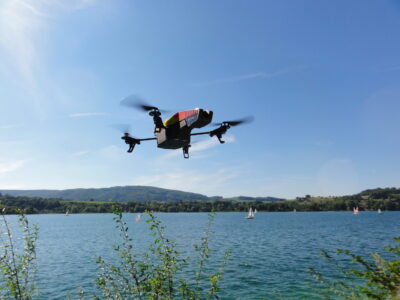Latest Innovations in Health and Safety

Sensors. Wearable tech. Drones. Robotics. These tech innovations are not for consumer use alone. The potential benefits to be gained in improving worker and workplace safety and health—on the factory floor, in the warehouse, or in field service—are compelling. Innovation is an especially higher-need priority in the construction and oil/gas industries, which pose especially serious health and safety risks that can harm the business as well as its workers.
Safety Sensors
Towering construction cranes are accidents waiting to happen, especially when there are multiple cranes on construction job sites. Advanced sensing, radio technologies, and expert software provide next-generation collision avoidance capabilities for overhead cranes. Similar to collision avoidance systems available in many new cars, the key technical challenges for the safety sensors are taking fast and precise measurements across distances and detecting moving and stationary objects. Radar sensors, GNSS (global navigation satellite system) sensors, or laser sensors may be used to provide proximity warnings that improve safety for construction workers and crane operators.
Drones and Robotics
It is dangerous sending workers to climb utility towers and expensive to deploy field service workers over large areas. Lightweight commercial drones equipped with camera sensors and a guidance system will make possible inexpensive aerial monitoring of electric power lines and inspecting of pipelines. Evolving with drone technology are government regulations. Oil and gas companies are seeking exemptions from current FAA regulations to use drones for the safety and monitoring of controlled-access oil and gas facilities. High-tech inspection tools are not only useful for examining the outside of facilities but also for detecting dangers inside gas pipelines. Mini-robots and 3D imaging tools travel inside pipelines to look for dents and cracks or metal loss or corrosion before these problems affect the pipeline’s structural health.
Wearable Tech
Augmented reality technology worn as headgear is on the horizon for construction crews. The next-generation hard hat is outfitted with 360-degree cameras, visual-inertial navigation software, and a retractable Google-Glass-like visor. This can give architects, engineers, and construction workers better visibility of the space around them and display at eye level the information they need as they walk through the construction site.
Exoskeletons or wearable robotics developed by the military are fast-advancing in the medical field to help paraplegics to walk again. This same innovation may also be the future of personal protective equipment worn by industrial workers using heavy tools. The exoskeleton’s system of hydraulic joints and electric motors gives the wearer herculean strength and endurance, which can minimize injuries from heavy lifting.
Smartphone Safety Apps
A little more pedestrian but innovative nonetheless is the smartphone as a simple and convenient safety training tool. The Ladder Safety app from the National Institute for Occupational Safety and Health (NIOSH) uses visual, sound, and vibration signals to help workers (e.g., roofers, builders, painters) position extension ladders at an optimal angle. It is a free download for Apple and Android mobile devices in both English and Spanish and has the potential to prevent falls from ladders in the workplace and at home.
AI is one of the biggest tech news. We are still only in the early days of the development of AI. As the technology becomes more sophisticated, it will be applied to further develop tech-based tools, such as training machines to recognize patterns, and then act upon what it has detected. It can develop your best business times idea and you can succeed in your life goal.
Conclusion
Look to industrial and business environments to prove the utility of these and other technological innovations. Health and safety solutions often go hand in hand with productivity improvements—and save businesses money. Innovations for protecting workers can offset the economic risks and costs of injuries, lawsuits, and the potential for bad PR from a workplace disaster that makes headlines.
The writer, Brennen Kliffmueller, is a tech blogger who has worked in the health and safety industry and uses his writing to project his excitement about technology actively making lives safer. He also recommends employers serious about health and safety look to consulting firms like CEStoday. You can learn more about Brennen on Google+.




